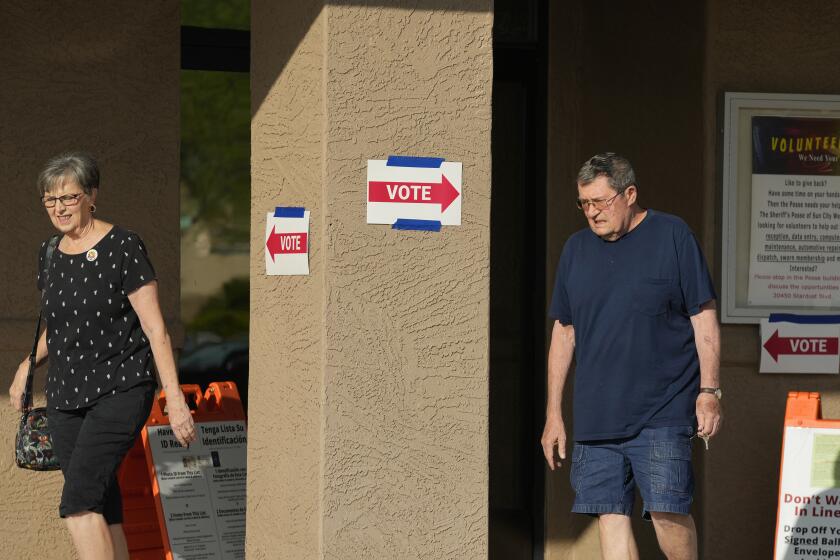For argument’s sake
IT WOULD BE UNFAIR TO SAY that arguments before the U.S. Supreme Court are shrouded in secrecy. Reporters and the public long have been able to attend arguments -- though seating is scarce in high-profile cases -- and transcripts are eventually published on the court’s website, www.supremecourtus.gov. In recent years, the court has even authorized the same-day release of audiotapes of especially newsworthy arguments.
Compared with Congress, however, the supposedly public proceedings of the court are still far from transparent. But beginning Tuesday, public access to oral arguments will increase exponentially when the court begins posting same-day transcripts on its website.
As with congressional proceedings, some cases will be more absorbing than others. Many Americans will want to read transcripts of the upcoming argument in Gonzales vs. Carhart et al, in which the court will weigh the constitutionality of a federal law banning so-called partial-birth abortions. But only legal junkies will be clicking their mice to read arguments in BP America Production Co. et al vs. Burton, a case that poses the riveting question of “whether -- contrary to the decision below but consistent with decisions of the Tenth and Federal Circuits -- the limitations period in 28 U.S.C. § 2415(a) applies to federal agency orders requiring the payment of money claimed under a lease or other agreement.”
Sensational or soporific, arguments before the court offer citizens an opportunity to learn how the justices think and occasionally to observe an internal debate among them expressed by posing questions to opposing counsel. Making such arguments more accessible could also increase informed knowledge about the judicial branch, always a good thing.
This innovation is the latest in a series of halting steps toward making the court more transparent. In 1993, it moved to deny access to recordings of old cases to a political scientist who had duplicated them for commercial publication. But the court relented, and the National Archives lifted a restriction on making copies. Now official transcripts of oral arguments actually identify justices by name -- this counts as progress -- when they ask a question.
Same-day transcripts still fall short of making audiotapes routinely available, and even that reform wouldn’t allow citizens to see the justices in action. Unfortunately, most justices seem to concur with Justice David H. Souter’s view that TV cameras will be brought into the courtroom “over my dead body.”
Like lawyers who appear before the court, we hope Souter and his colleagues are willing to reexamine their view that television coverage would change what Justice Anthony Kennedy called the “dynamic” of the court. Reading the justices’ questions -- and lawyers’ answers -- will be educational. Even more illuminating would be the opportunity to watch and listen to those exchanges.
More to Read
Get the L.A. Times Politics newsletter
Deeply reported insights into legislation, politics and policy from Sacramento, Washington and beyond. In your inbox three times per week.
You may occasionally receive promotional content from the Los Angeles Times.










